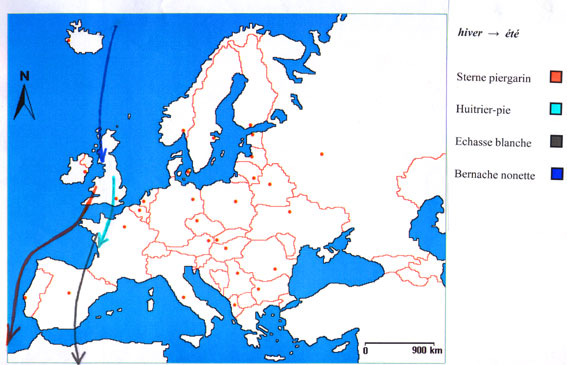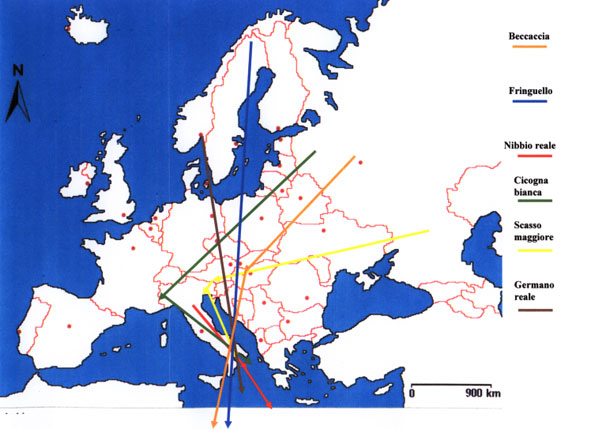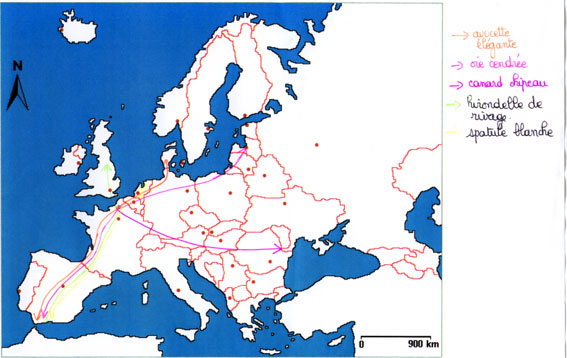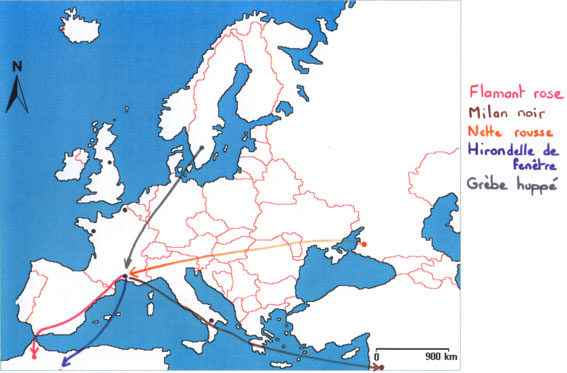Migration
Definition: moving of certain animals according to the seasons. Lots of animals migrate completely or partially: birds, fish (eels, salmon...), mammals (whales, zebras...), certain insects (butterflies: monarch).
When: Of around 600 species of birds that nest in Europe, 40 migrate in autumn.
Where: In Europe, most of the migratory birds cross the continent in autumn in the direction of the Southwest. There are some birds that migrate from the Southern Hemisphere and winter in the North. There is also a more rare migration from East to West like the Canada Goose.
Why: Birds migrate to help their feeding and breeding patterns. Birds migrate to get the food they need in order to survive. When birds migrate for breeding purposes it is because in warmer climates there are more hours of daylight, and this enables them to feed themselves and their young.
Preparation: Birds who migrate are preparing to 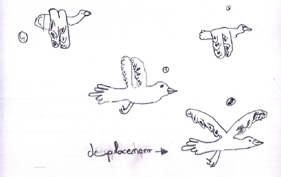 make long journeys, which are often non-stop flights. Therefore they need lots of fuel to keep them alive. Before migration a bird goes through physical changes to allow it to store extra fat around its body. The amount of fat stored depends on how far the bird has to fly. Some birds increase their weight by half and others double it.
make long journeys, which are often non-stop flights. Therefore they need lots of fuel to keep them alive. Before migration a bird goes through physical changes to allow it to store extra fat around its body. The amount of fat stored depends on how far the bird has to fly. Some birds increase their weight by half and others double it.
General Comment: Not all birds migrate in the same way. Birds travel in small groups, large flocks or even alone. Migrating birds usually take the shortest route.
Large birds like to soar to cross long distances. They need to follow the thermals, which are up currents of warm air, which help to lift the birds. They also use the same flight path and follow the best route, using lines of hills to help find the thermals. These birds only use the shortest route to cross the sea, as there are no thermals above it.
Small birds prefer not to fly after dark but during migration most activity takes place then. It is not known why - perhaps there are less predators or better clues for navigation for the birds. Migration of birds seems to be instinctive, that they have a 'Sixth Sense'. However, experiments have been carried out to find out how birds know where to go when they migrate. They seem to get some directio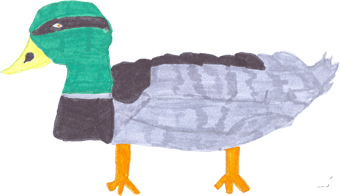 nal information from the Earth's magnetic field. It is thought that birds use smell, sound and the geography of the land to help them migrate.
nal information from the Earth's magnetic field. It is thought that birds use smell, sound and the geography of the land to help them migrate.
Dangers of Migration: Migration is very dangerous for birds, half of them don't reach their
destination.
The different dangers:
• Development of the landscape: high-tension cables are the main danger for migratory birds. Deforestation and urbanisation disrupts migration.
• The weather: birds can get lost on their way if they fly into storms.
• Man: certain birds are hunted during their migration e.g. the wood pigeon.
• Pollution: oil, insecticides...
• Undertaking a long journey consists of many dangers for the birds: drowning, weakened by lack of food and predators from which they can't escape.
